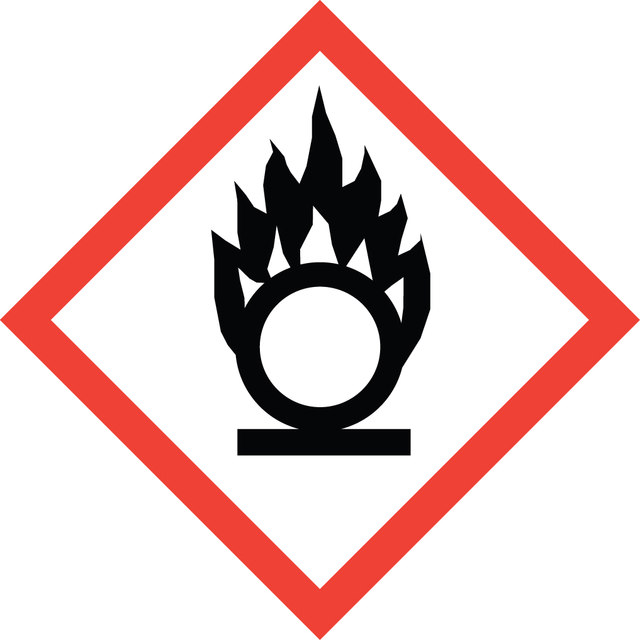Select a Size
About This Item
Product Name
Sodium (meta)periodate, ≥99.0%
InChI
1S/HIO4.Na/c2-1(3,4)5;/h(H,2,3,4,5);/q;+1/p-1
InChI key
JQWHASGSAFIOCM-UHFFFAOYSA-M
SMILES string
[Na+].[O-]I(=O)(=O)=O
assay
≥99.0%
form
powder
reaction suitability
reagent type: oxidant
pH
3.5-5.5 (25 °C, 107 g/L)
solubility
H2O: 50 mg/mL
Quality Level
Looking for similar products? Visit Product Comparison Guide
Related Categories
Application
- 1,2-diols to aldehydes or ketones via oxidative cleavage. Sulfides to sulfoxides in the presence of phase transfer catalysts.
- Diaryl, dialkyl, and aryl alkyl selenides to the respective selenoxides.
- Phenols and their derivatives to corresponding quinones.
- Acylphosphoranes to α,β-dicarbonyl compounds.
It can also be used in the:
- Selective alkene epoxidation and alkane hydroxylation,·
- Oxidation of carbohydrates.
- Iodination of aromatic compounds.
Features and Benefits
General description
signalword
Danger
hcodes
Hazard Classifications
Aquatic Acute 1 - Aquatic Chronic 1 - Eye Dam. 1 - Ox. Sol. 1 - Skin Corr. 1C - STOT RE 1
target_organs
Thyroid
Storage Class
5.1A - Strongly oxidizing hazardous materials
wgk
WGK 3
flash_point_f
Not applicable
flash_point_c
Not applicable
Regulatory Information
Choose from one of the most recent versions:
Already Own This Product?
Find documentation for the products that you have recently purchased in the Document Library.
Which document(s) contains shelf-life or expiration date information for a given product?
If available for a given product, the recommended re-test date or the expiration date can be found on the Certificate of Analysis.
How do I get lot-specific information or a Certificate of Analysis?
The lot specific COA document can be found by entering the lot number above under the "Documents" section.
What is Sodium (meta)periodate, Product S1878, soluble in?
We have tested the solubility of this compound in water at 100mg/mL; heat may be required to get it to dissolve at that concentration. Per the chemicals encyclopedia published by the Royal Society of Chemistry, it is also expected to be soluble in sulfuric, nitric and acetic acids.
What can Sodium (meta)periodate, Product S1878, be used for?
Sodium metaperiodate is used by synthetic chemists as an effective oxidant. It is a stable, specific, cost-effective reagent that is capable of reacting under mild conditions. It has been used to cleave vicinal diols to carbonyl compounds, convert sulfides into sulfoxides and oxidize primary and secondary halides to the corresponding aldehydes and ketones.
How long is Sodium (meta)periodate, Product S1878, good for?
Sodium metaperiodate is extremely stable at room temperature. Sigma-Aldrich assigns a recommended retest period of 8 years to this product as seen on the product's specification sheet.
How do I find price and availability?
There are several ways to find pricing and availability for our products. Once you log onto our website, you will find the price and availability displayed on the product detail page. You can contact any of our Customer Sales and Service offices to receive a quote. USA customers: 1-800-325-3010 or view local office numbers.
What is the Department of Transportation shipping information for this product?
Transportation information can be found in Section 14 of the product's (M)SDS.To access the shipping information for this material, use the link on the product detail page for the product.
My question is not addressed here, how can I contact Technical Service for assistance?
Ask a Scientist here.
Our team of scientists has experience in all areas of research including Life Science, Material Science, Chemical Synthesis, Chromatography, Analytical and many others.
Contact Technical Service


